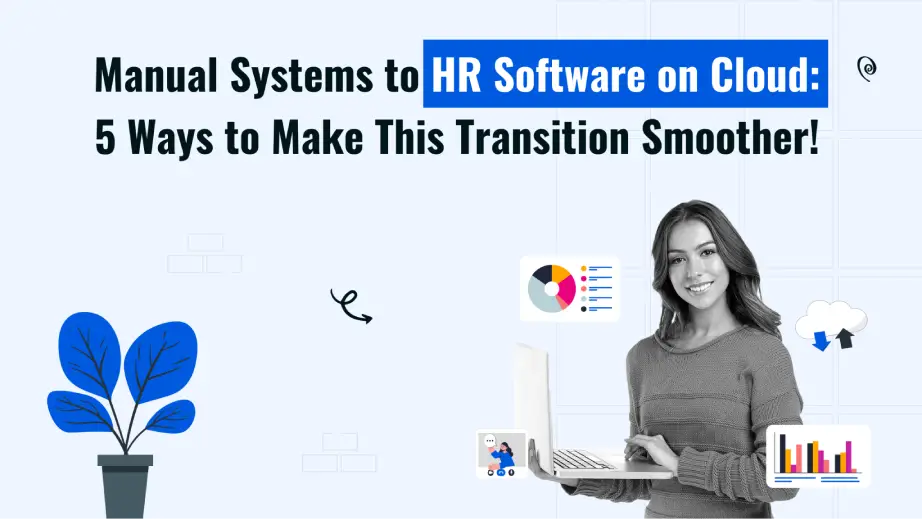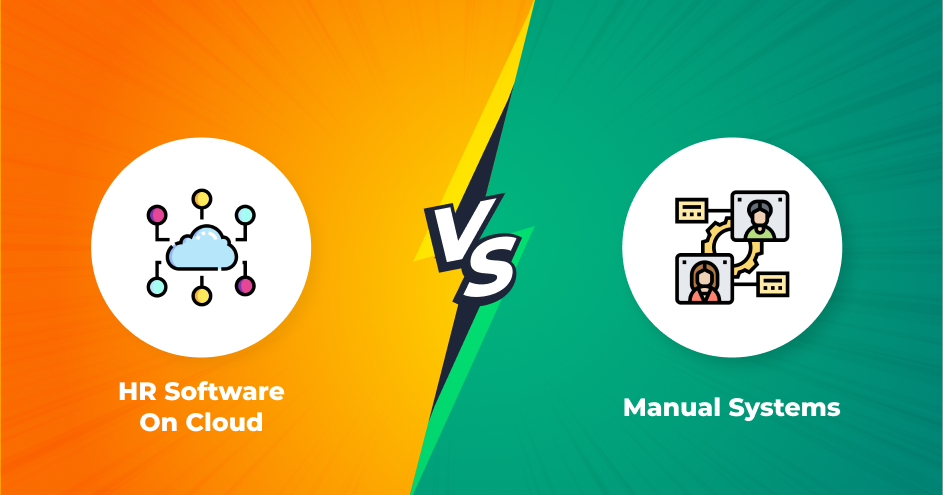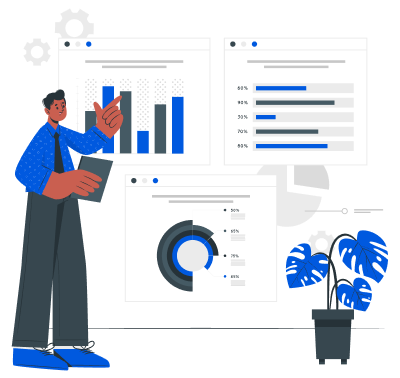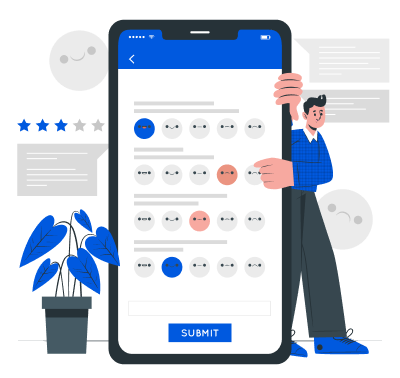Grab a chance to avail 6 Months of Performance Module for FREE
Book a free demo session & learn more about it!
-
Will customized solution for your needs
-
Empowering users with user-friendly features
-
Driving success across diverse industries, everywhere.
Grab a chance to avail 6 Months of Performance Module for FREE
Book a free demo session & learn more about it!
Superworks
Modern HR Workplace
Your Partner in the entire Employee Life Cycle
From recruitment to retirement manage every stage of employee lifecycle with ease.


Seamless onboarding & offboarding
Automated compliance & payroll
Track performance & engagement
Manual Systems to HR Software on Cloud: 5 Ways to Make This Transition Smoother!
- hrms software india
- 11 min read
- July 24, 2023

Are you still managing your HR processes using manual systems, drowning in piles of paperwork, and facing communication gaps? It’s time to embrace the power of cloud-based HR software and revolutionize your human resources operations!
According to recent studies, a staggering number of companies are transitioning from traditional methods to cloud-based HR solutions, witnessing improved efficiency and streamlined workflows.
In this blog, we’ll explore five essential ways to make this transition smoother, ensuring a seamless shift toward a more efficient and productive HR ecosystem. From data migration strategies to employee database management, let’s discover how to unlock the true potential of best hr analytics software on cloud!
What is Cloud Based HR Systems?
Cloud-based HR software refers to a web-based solution that facilitates human resources management and operations through the Internet.
Unlike traditional on-premise systems, this innovative approach allows HR tasks to be conducted, accessed, and stored on remote servers hosted by the software provider.
Cloud-based HR software offers numerous advantages, including enhanced accessibility from anywhere with an internet connection, increased data security, seamless updates and maintenance, and scalability to adapt to an organization’s evolving needs.
This modern HR technology enables streamlined recruitment, employee onboarding, performance tracking, time and attendance management, payroll processing, and much more. Its user-friendly interface and cost-effectiveness make it an attractive choice for businesses of all sizes.
HR Software on Cloud V/S Manual Systems – What’s Best For Your HR Processes?
A cloud based hr system and manual systems each have their unique advantages and disadvantages, making the choice dependent on an organization’s specific HR needs and priorities.
A Human Resource Management System offers numerous benefits, including enhanced accessibility, flexibility, benefits management, and much more. It allows HR tasks to be conducted anytime, anywhere, as long as there is an internet connection. This accessibility facilitates remote work and collaboration among team members.
Additionally, cloud HR systems offer seamless updates and maintenance as well as benefits administration, ensuring the latest features and security measures are always in place.
Employee data, payroll data, and more sensitive information are securely stored on remote servers, reducing the risk of data loss or breaches.
On the other hand, manual HR systems might be more suitable for smaller organizations with simpler HR processes and limited budgets. They offer a more personalized approach and direct control over data management. However, manual systems can be time-consuming, prone to errors, and lack the efficiency and analytics capabilities of cloud based HRMS software.
Ultimately, larger organizations or those with complex HR needs tend to benefit more from cloud-based HR software systems due to their scalability, automation, and data-driven insights.
Meanwhile, smaller businesses may find manual systems sufficient for their requirements, particularly if they prioritize hands-on control and cost-effectiveness. Evaluating factors like budget, size, and HR demands will help determine which option is the best fit for each organization.
Top 6 Benefits of HR Software on Cloud
There are literally so many benefits but take a look at the top ones you should know about:
-
Zero Paperwork
With HR software on the cloud, say goodbye to mountains of paperwork and the hassle of manually managing employee records.
HR cloud software enables you to store and access all essential HR documents digitally. From employee contracts and leave requests to performance appraisals and training materials, everything can be securely stored and easily retrieved at any time, saving valuable time and physical storage space.
-
More HR Efficiency
Automating repetitive HR tasks is a game-changer for HR departments.
Cloud-based HR systems streamline HR processes and facilitate automated HR processes like employee onboarding, payroll management, and applicant tracking system, freeing core HR personnel from tedious administrative work. This efficiency boost allows HR teams to focus on more strategic initiatives, fostering organizational growth and employee development.
-
Increased Employee Engagement
Engaged employees are the foundation of a successful organization.
HR software on the cloud facilitates better employee performance and engagement by providing self-service portals for employees to access their information, apply for leave application, update personal details, and view company announcements. This instant access empowers employees, making them feel more connected and involved in the organization’s activities.
-
Easy Performance Management
Cloud-based HR software offers a centralized platform to set performance goals, conduct regular evaluations, and provide feedback to employees.
Managers and employees can track progress, identify areas for improvement, and align individual goals with the company’s objectives more efficiently.
-
Enhanced Communication
Effective communication is the lifeblood of any organization. top 10 HR software in india on the cloud facilitates seamless communication among employees, HR teams, and managers.
Through integrated messaging systems, company-wide announcements, and discussion forums, employees can collaborate and stay informed, fostering a culture of transparency and open communication.
-
Improved Reports & Analytics
Data-driven decision-making is essential for strategic Human Resource Planning. Cloud-based HR software provides advanced reporting and analytics capabilities, allowing HR professionals and management to gain valuable insights into various HR metrics.
From employee turnover rates and performance trends to recruitment effectiveness, these analytics empower organizations to make informed decisions and optimize HR strategies.
To Read More: 10 Best HR Software in India: Empowering Businesses with Efficient Solutions

Tired of manual operations? Don’t worry – we’ll solve your problem!
Choose Superworks – a top-notch HR software on cloud for businesses of all types and sizes. With Super HRMS, you can say a final goodbye to stressful days, non-compliance, and expensive errors, enabling 5X productivity and engagement.
So, are you all ready to make the smart switch and ease your routine operations?
How to Choose The Best HR Software on Cloud?
Choosing the best cloud HR software on the cloud is a crucial decision that can significantly impact an organization’s HR processes and overall efficiency. To ensure you make the right choice, follow these steps to find the most suitable as there are so many options in the HR software market:
-
Check the Reviews
When choosing the best HR software on the cloud, start by checking user reviews and testimonials. Online reviews offer valuable insights from actual users regarding the software’s performance, reliability, and overall satisfaction.
Pay attention to comments about user-friendliness, customer support, and security features. These reviews can provide crucial information about the software’s strengths and weaknesses, helping you make an informed decision.
Positive feedback from satisfied users is an encouraging sign, while any recurring negative issues may be red flags to consider. By taking the time to review feedback from other users, you can gain valuable perspectives to guide your choice of cloud-based HR software.
Engage in open communication with the HR software service provider by sharing your organization’s specific HR requirements and objectives. An effective partnership begins with transparent discussions about your organization’s unique challenges, workflows, and goals.
By expressing your needs clearly, the provider can offer tailored solutions that align with your HR processes. This communication also allows the provider to address any concerns and propose features that best suit your needs.
A reputable provider will listen attentively, understand your requirements, and work collaboratively to deliver a cloud-based HR solution that enhances your HR management tools and supports your overall business success.
-
Take a Free Demo
Requesting a free demo from the HR software provider is a crucial step in the selection Process. A demo allows you to experience the software’s functionality firsthand, exploring its user interface, features, and capabilities. It provides an opportunity to test how well the cloud-based HR software aligns with your organization’s needs and processes.
During the demo, ask questions and seek clarification on any specific requirements. Observing the software in action helps you assess its user-friendliness, customization options, and potential benefits for your HR team.
Taking a free demo empowers you to make an informed decision and choose the best HR software for your organization.
-
Check for Key Features
When evaluating HR software solutions, thoroughly examine their features to ensure they meet your organization’s needs. Look for essential functionalities such as-
- Recruitment and applicant tracking
- Employee management
- Talent management
- Human capital management
- Onboarding
- Performance management module
- Time and attendance tracking
- Payroll processing
- Reporting
Additionally, check for advanced features like employee self-service, automated workflows, analytics, and integration capabilities with other business tools.
Efficient features enhance HR processes, boost productivity, and improve employee experiences.
Consider how these features align with your current and future requirements, empowering your organization to make data-driven decisions and streamline HR operations effectively.
A robust set of features is a key indicator of a comprehensive and efficient cloud-based HR software solution.
-
Check the Price & Choose the Correct Plan
Before finalizing cloud-based HR and payroll systems, carefully review the pricing plans offered by different providers.
Consider the features and services included in each plan and evaluate how well they align with your organization’s HR needs.
Compare the costs, scalability options, and potential add-ons to ensure you select the most cost-effective plan. Assess whether the chosen plan can accommodate your current workforce size and future growth.
Avoid overpaying for unnecessary features while ensuring the plan meets your critical HR requirements. Making an informed decision about the price and plan will lead to a successful implementation of the HR software that optimizes your strategic HR management and budget.
Also, See: Buyer’s Guide: Top 5 HCM Solution Software Of 2024
5 Steps to Make The Transition to Cloud HR Software Smoother
Transitioning to cloud-based HR software can be a transformative journey for your organization. To ensure a smooth and successful transition, follow these five essential steps:
1. Assess Your HR Needs:
Assessing your HR needs is a crucial first step before transitioning to cloud HR and payroll software. Conduct a comprehensive evaluation of your current HR processes, identifying pain points and areas for improvement.
Engage with HR staff and department heads to understand their specific requirements and challenges.
Determine the functionalities and features necessary to address these needs effectively. Analyze and manage employee data management, recruitment, onboarding, performance tracking, and other HR functions.
This assessment sets the foundation for selecting the right cloud HR software that aligns with your organization’s unique needs and goals, ensuring a successful transition and optimized HR management.
2. Research and Select the Right Software:
The second step in transitioning to cloud HR software is conducting thorough research and selecting the most suitable solution.
Explore various cloud HR software options available in the market. Look for reputable providers with positive reviews and a track record of successful implementations.
Compare features, pricing, scalability, and customer support offered by each provider. Consider your organization’s specific HR needs and budget constraints. Seek demos or trial periods to experience the software firsthand.
By diligently researching and evaluating options, you can make an informed decision and choose the right cloud HR software that best aligns with your organization’s requirements, ensuring a seamless transition and improved HR operations.
3. Plan for Data Migration:
Planning for data migration is a critical step when transitioning to cloud HR software. Create a detailed strategy to transfer HR data from existing systems to the cloud. Identify the data to be migrated, ensuring its accuracy and integrity throughout the process.
Collaborate closely with the HR software provider to determine the most efficient migration method and timeframe. Back up all essential data before migration and conduct thorough testing to verify data completeness and security post-migration.
ata migration ensures a smooth transition, minimizes disruptions, and safeguards sensitive HR information, enabling a successful adoption of the new cloud-based HR software.
4. Provide Comprehensive Training:
Offering comprehensive training is crucial for a successful transition to cloud HR software. Develop a training program that caters to the needs of HR staff and other users. Utilize a combination of online tutorials, workshops, and one-on-one sessions to familiarize them with the new software.
Cover various functionalities, workflows, and best practices to ensure confident navigation and utilization. Encourage hands-on practice and create opportunities for staff to ask questions and seek clarification.
A well-trained team will embrace the new system, optimizing its capabilities and maximizing efficiency. Ongoing support and training updates further enhance the adoption process and empower users to leverage the full potential of the cloud HR software.
5. Monitor Progress & Seek Feedback:
Continuously monitoring the progress of the transition to cloud HR software and seeking feedback from HR staff and stakeholders is vital for its long-term success. Regularly assess the impact of the new system on HR operations and employee experiences.
Gather feedback to identify any challenges or areas of improvement. Analyze performance metrics and key indicators to measure the effectiveness of the cloud-based HR software. Act on feedback promptly to address issues and optimize processes.
An iterative feedback loop ensures continuous improvement and ensures that the cloud HR software aligns seamlessly with organizational needs, fostering a culture of ongoing enhancement and maximum efficiency.
Conclusion
Have you got the concept cleared? Transitioning from manual HR systems to cloud-based HR software can significantly enhance efficiency and productivity in an organization.
In conclusion, Embracing HR Technology and its transformative potential will empower HR departments to streamline operations, improve employee experiences, and drive long-term success for the entire organization. So, it is time to embrace the cloud and embark on this journey to a more efficient HR future!
Also see: buy payroll software online



















